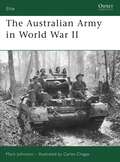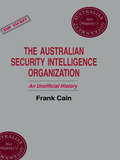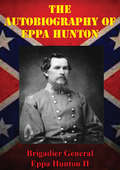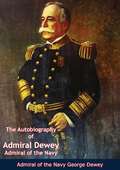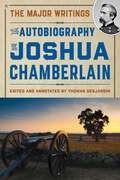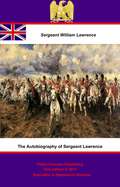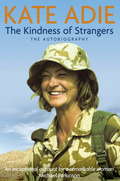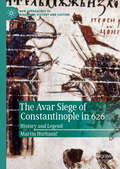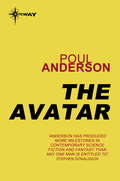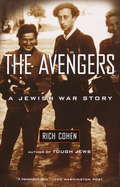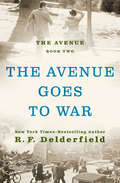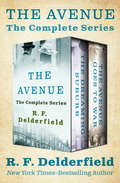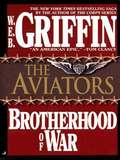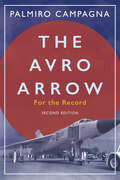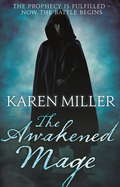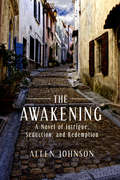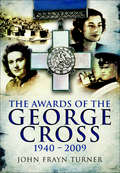- Table View
- List View
The Australian Army in World War II
by Mark Johnston Carlos ChagasOsprey's examination of the Australian army and its involvement in World War II (1939-1945). The Australian infantry were amongst the Commonwealth's toughest and most widely traveled infantry, serving in campaigns including Syria, Greece, Cyprus, Crete, Libya, Egypt, New Guinea, and the South West Pacific. Their fearsome fighting reputation was earned first against the Afrika Corps in the Libyan Desert, and then in the hellish conditions of New Guinea, where they held out against the Japanese invasion.Written by a leading expert on the subject and coupled with previously unpublished photographs from private collections and specially commissioned artwork, this book gives a comprehensive overview of the organization, units, uniforms, and insignia of the Australian "Diggers."
The Australian Security Intelligence Organization: An Unofficial History (Studies in Intelligence)
by Frank CainThis book traces the history of Australia's highly secret Intelligence Security Organisation. Established in the early days of the Cold War, like most intelligence organisations working under covert conditions, it exceeded the vague powers entrusted to it. It has been the subject of two Royal Commissions in Australia and in recent times several acts of Parliament have been passed in order to make it more accountable to Australia's government and its citizens.
The Australian Victories In France In 1918 [Illustrated Edition]
by Lieutenant-General Sir John MonashContains 9 maps and 30 photo illustrationsThe Australian Corps gained a towering reputation as a fighting force during the First World War; firm in defence and nigh-on unstoppable in attack. Their men were all volunteers who had travelled from the furthest reaches of the Empire to serve in Europe; following on from the badly managed campaign at Gallipoli the Australians formed a heterogeneous corps on the Western Front in 1916. Their record in the fighting during 1916 and 1917; including the capture of Bullecourt, the battles of Passchendaele and Messines Ridge were noteworthy in themselves. However their performance in 1918 was beyond all praise; foremost in blunting the German Spring offensives and then hurling themselves on the retreating Germans with savage abandon as the spearhead of the entire British Army.It is only fitting that the author of this story of Australian Glory is Lieutenant-General Sir John Monash, their hugely successful commander. He writes with passion, verve and highlights the performance of his men even down to the performance of individual officers and soldiers with great pride.A fantastic book celebrating the victories and sacrifices of the Australian soldiers on the Western Front in the last year of World War One.
The Autobiography Of Eppa Hunton
by Brigadier General Eppa Hunton IIEppa Hunton II (1822-1908), was a prominent figure in Virginia throughout his career as a lawyer, soldier and Congressman. Although his autobiography was written mainly for his family it contains much to interest the general reader and Civil War historian alike.In 1861 Hunton was among the delegates to the Virginia Succession Convention and voted for secession; immediately thereafter he was commission as a colonel in the 8th Virginia Infantry. He saw much action in the early years of the war, at First Bull Run and the battle of Ball's Bluff; he commanded a brigade in Longstreet's Corps under Pickett. His memories of Pickett's charge in which he was wounded are among the ever written, having recovered he served in the Army of Northern Virginian as a Brigadier General at Cold Harbor and the defence of Petersburg. He was again wounded at the battle of Sayler's creek and captured by Union forces.A gem of a Civil War memoir.
The Autobiography Of Lieutenant-General Sir Harry Smith, Baronet of Aliwal on the Sutlej, G.C.B.: Edited with the addition of some supplementary Chapters by G. C. Moore Smith M.A.
by G. C. Moore Smith Pickle Partners Publishing Lieutenant-General Sir Harry [Henry] George Wakelyn Smith G.C.B. Bart.This ebook is purpose built and is proof-read and re-type set from the original to provide an outstanding experience of reflowing text for an ebook reader. The autobiography of Sir Harry Smith, 1st Baronet of Aliwal, is as exciting, varied and adventurous as the epic life that he led. He joined the British army in the 1st battalion of the 95th Rifles, whose dark green uniform he was proud to wear and despite an inauspicious posting along with the disastrous expedition to Montevideo in 1807 his talents began to emerge. These talents were to be brought to bear on three other continents in the service of the British. A contemporary of, and good friend of, other famed writers of the Rifles, such as Sir John Kincaid, Major George Simmons, and Jonathan Leach. These characters appear in their varied guises throughout the narrative to give it a distinctly Rifle Brigade feeling. The autobiography was originally published in two parts, however in terms of phases or major periods of his life it is best to describe them in three distinct eras; The Napoleonic Period covers Sir Harry's career in the 95th through-out the Peninsular War, fighting in the Light Division from victory to victory. His Peninsular Medal , when issued in 1847, came with 12 clasps: Coruna, Busaco, Fuentes d'Onoro, Ciudad Rodrigo, Badajoz, Salamanca, Vittoria, Pyrenees, Nivelle, Nive, Orthez, Toulouse to represent the hard fought and glorious victories he had participated in. However perhaps his most fortuitous discovery during this period was Juana, his wife who having seen all here property destroyed in Badajoz came to the British lines to seek protection. Sir harry also participated in the Waterloo campaign in 1815 and provides a number of vivid anecdotes and flashes of action. The second period was in the emergent British Empire in India, where he trained and fought alongside native forces in the First Anglo-Sikh war. His victory at Aliwal on the Sutlej, in which he was outnumbered almost two to one, is widely regarded as the turning point of the war and led to further expansion what would become the Raj. Of the battle itself, the following quote might serve "Mr. B. Genn, late of the 15th Hussars, who had served under him in India in 1846, and who had fired over his grave. As soon as I had opened the door, a fine engraving of Sir Harry greeted me. It had been bought at a sale. The old veteran spoke of his commander always as the "dear old man." When I asked him if he thought him a good General, he fired up quickly, "Why, think of the battle of Aliwal! Not a mistake anywhere." Smith's next major positing was to the South Africa, where he played a major role in shaping the form of the colony. The evident differences between the natives, Boers and the administration that would flare up over the forty years since the ending of Smith's time, are littered amongst the pages of his writing. Of lasting fame can still be found here in the naming of numerous towns, not least of which the city of Ladysmith named after his wife Juana. A passionate man, often wild of temper, but brilliant and balanced nevertheless; an anecdote reported in his autobiography gives a little flavour of the man; "It was a common habit with Sir Harry Smith to threaten to jump down people's throats,-boots, spurs, and all; and he once on a field of battle sent a message, seasoned with some fearful expletives, to a colonel that if he kept his regiment so much to the front, he'd have him knee-haltered. But the fine old General drew a line at swearing and never allowed of personal abuse." Text taken, whole and complete, from the 1902 edition, in one volume, published in London by John Murray, Original 800+ pages. Author - Lieutenant-General Sir Harry [Henry] George Wakelyn Smith BART, G.C.B. (1787-1860) Editor - George Charles Moore Smith (1858-1940) Linked TOC and 16 Illustrations.
The Autobiography of Admiral Dewey: Admiral of the Navy
by Admiral of the Navy George DeweyOne of America's best known naval heroes whose life straddled two centuries and several stages of naval development, tells his own story.-Print ed.George Dewey was born on December 26, 1837 in Montpelier, Vermont. Upon his graduation from the Naval Academy in 1857, he was commissioned as a lieutenant in 1861. During the Civil War he served with Admiral Farragut during the Battle of New Orleans and as part of the Atlantic blockade. From 1871 until 1896, Dewey held a variety of positions in the Navy. In 1897 he was named commander of the Asiatic Squadron, thanks to the help of strong political allies, including Assistant Secretary of the Navy, Theodore Roosevelt.Roosevelt's help was also essential in supplying Dewey with guns, ammunition, and other needed supplies so that his fleet would be prepared if war broke out with Spain. An aggressive commander, Dewey ignored China's neutrality and took on coal for his fleet at Mirs Bay. He was forced to leave Hong Kong on April 25, but not before the U.S.S. Baltimore had arrived from Honolulu with needed ammunition.Thus prepared for battle, Dewey launched his attack, through mined waters and firing shore batteries, on Admiral Patricio Montojo's slow, outmoded, under-supplied Spanish squadron at Cavite in Manila Bay. On May 1, he engaged the Spanish forces and demolished them, inflicting very heavy casualties. His troops occupied the bay and Manila itself alone until General Wesley Merritt's soldiers arrived in August.News of the victory in the Battle of Manila Bay reached President McKinley on May 7 and soon Dewey became a national hero. Congress awarded him a promotion to real admiral and handed out citations to members of his fleet. Although he thought about running for president, he settled for writing accounts of his famous victory and publishing his autobiography in 1913.
The Autobiography of Joshua Chamberlain
by Joshua ChamberlainJoshua Chamberlain has become a pop culture icon and his regiment is now the most famous small military unit in American history. A major focus of The Killer Angels, the largest selling Civil War novel of all time, save Uncle Tom&’s Cabin, and two major motion pictures, &“Gettysburg&” and &“Gods and Generals,&” the story of the 20th Maine has become legendary, particularly their effort to defend the Union Army&’s position on Little Round Top at the Battle of Gettysburg. According to filmmaker Ken Burns, it was the story of Chamberlain as told in the novel The Killer Angels that inspired him to create his masterpiece, nine-part documentary film, &“The Civil War.&” In 1890s, at the encouragement of friends, Chamberlain wrote an autobiography covering his life from childhood to just before he joined the army in 1862. He stopped there, because by then he had written so many speeches and essays about his life in the army that there was no point in telling that part of his life story again. Assembled here, and annotated, are that original 1890s manuscript along with essays he wrote about the three most significant battles of his military experience—Fredericksburg, Gettysburg, and Petersburg—as well as the story of the surrender ceremony for the Confederate Army at Appomattox which he commanded.
The Autobiography of Sergeant Lawrence - A Hero of the Peninsular and Waterloo Campaigns [Illustrated Edition]
by Pickle Partners Publishing Sergeant William Lawrence George Nugent BankesThis ebook is purpose built and is proof-read and re-type set from the original to provide an outstanding experience of reflowing text for an ebook reader. Sergeant William Lawrence's account of his life is an interesting addition to the memoirs of the Napoleonic period, not for the style and grace of the prose, as Lawrence was not a highly educated man, although highly observant. What is often missing from other memoirs of the period is that mostly, they are written by the officers, and with some notable exceptions do not give a feel for the way of life for the ranker and the N.C.O.. This autobiography goes some way to fill the gap in the record. Such instances as rations, the occasional pig of dubious provenance, "cyder", footsore marches lacking boots, and floggings are juxtaposed with the battles and skirmishes. Lawrence served in the 40th regiment of foot, in both the Peninsular war and the Waterloo campaign, ascending from private to Sergeant. Describing the storming of Badajoz, the battles of Vittoria and Waterloo in his turn he was rightly proud of his achievements and the Waterloo medal he wore, he died in his native Dorset in 1867 leaving a descendant to publish this book. Text taken from 1886 edition, full and complete, includes 10 additional maps to illuminate the text. All maps taken from Napier's History of the War in the Peninsular and the South of France, 1888 edition apart from 10. Which is taken from Captain Batty's An Historical Sketch of the Campaign of 1815, Illustrated by Plans of the Operations and of the Battles of Quatre Bras, Ligny, and Waterloo. 1 - The Battle of Vimiero, 21st August 1808 - Vol. I 2- Explanatory Sketch of the Campaign in Portugal August 1808- Vol. I 3- Battle of Talavera, 28th July 1809- Vol. II 4 - Operations on the Mondego and the Battle of Busaco - Vol. III 5 - The Lines of Torres Vedras - Vol. III 6 - Battle of Albuera, 16th May 1811 - Vol. III 7 - The Siege of Badajoz - 1812 - Vol. IV 8 - Battle of Vittoria and Operations leading up to it. - Vol. V 9 - Battle of Orthez and Soult's retreat to Aire. - Vol. VI 10- Map of the Battle of Waterloo, 18th June 1815. $ Author - William Lawrence [1791-1867] Editor - George Nugent Bankes [????-????]
The Autobiography: The Kindness of Strangers
by Kate AdieKate Adie's story is an unusual one. Raised in post-war Sunderland, where life was 'a sunny experience, full of meat-paste sandwiches and Sunday school', she has reported memorably and courageously from many of the world's trouble spots since she joined the BBC in 1969. THE KINDNESS OF STRANGERS encompasses Adie's reporting from, inter alia, Northern Ireland, the Middle East, Tiananmen Square and, of course, the Gulf War of 1991. It offers a compelling combination of vivid frontline reporting and evocative writing and reveals the extraordinarily demanding life of the woman who is always at the heart of the action. Although an intensely private person, Kate Adie also divulges what it's like to be a woman in a man's world - an inspiration to many working women.
The Autobiography: The Kindness of Strangers
by Kate AdieKate Adie's story is an unusual one. Raised in post-war Sunderland, where life was 'a sunny experience, full of meat-paste sandwiches and Sunday school', she has reported memorably and courageously from many of the world's trouble spots since she joined the BBC in 1969. THE KINDNESS OF STRANGERS encompasses Adie's reporting from, inter alia, Northern Ireland, the Middle East, Tiananmen Square and, of course, the Gulf War of 1991. It offers a compelling combination of vivid frontline reporting and evocative writing and reveals the extraordinarily demanding life of the woman who is always at the heart of the action. Although an intensely private person, Kate Adie also divulges what it's like to be a woman in a man's world - an inspiration to many working women.
The Autumn of the Ace
by Louis de Bernieres'De Bernieres is a singular, cherishable voice' Mail on SundayFrom the master of historical fiction, this book follows war hero Daniel Pitt and his unforgettable family after the Second World War.Some bonds are hard to break...Daniel Pitt was an RAF fighter in the First World War and an espionage agent for the SOE in the Second. Now the conflicts he faces are closer to home.Daniel's marriage has fractured beyond repair and Daniel's relationship with his son, Bertie, has been a failure since Bertie was a small boy.But after his brother Archie's death, Daniel is keen for new perspectives. He first travels to Peshawar to bury Archie in the place he loved best, and then finds himself in Canada, avoiding his family and friends back in England. Daniel and Bertie's different experiences of war, although devastating, also bring with them the opportunity for the two to reconnect.If only they can find a way to move on from the past...For more adventures with flying ace Daniel Pitt, see The Dust That Falls From Dreams and So Much Life Left Over.
The Avar Siege of Constantinople in 626: History and Legend (New Approaches to Byzantine History and Culture)
by Martin HurbaničThis book examines the Avar siege of Constantinople in 626, one of the most significant events of the seventh century, and the impact and repercussions this had on the political, military, economic and religious structures of the Byzantine Empire. The siege put an end to the power politics and hegemony of the Avars in South East Europe and was the first attempt to destroy Constantinople, the capital of the Eastern Roman Empire. Besides the far-reaching military factors, the siege had deeper ideological effects on the mentality of the inhabitants of the Empire, and it helped establish Constantinople as the spiritual centre of eastern Christianity protected by God and his Mother. Martin Hurbanič discusses, from a chronological and thematic perspective, the process through which the historical siege was transformed into a timeless myth, and examines the various aspects which make the event a unique historical moment in the history of mankind – a moment in which the modern story overlaps with the legend with far-reaching effects, not only in the Byzantine Empire but also in other European countries.
The Avars: A Steppe Empire in Central Europe, 567–822
by Walter PohlThe Avars arrived in Europe from the Central Asian steppes in the mid-sixth century CE and dominated much of Central and Eastern Europe for almost 250 years. Fierce warriors and canny power brokers, the Avars were more influential and durable than Attila's Huns, yet have remained hidden in history. Walter Pohl's epic narrative, translated into English for the first time, restores them to their rightful place in the story of early medieval Europe.The Avars offers a comprehensive overview of their history, tracing the Avars from the construction of their steppe empire in the center of Europe; their wars and alliances with the Byzantines, Slavs, Lombards, and others; their apex as the first so-called barbarian power to besiege Constantinople (in 626); to their fall under the Frankish armies of Charlemagne and subsequent disappearance as a distinct cultural group. Pohl uncovers the secrets of their society, synthesizing the rich archaeological record recovered from more than 60,000 graves of the period, as well as accounts of the Avars by Byzantine and other chroniclers.In recovering the story of the fascinating encounter between Eurasian nomads who established an empire in the heart of Europe and the post-Roman Christian cultures of Europe, this book provides a new perspective on the origins of medieval Europe itself.
The Avatar
by Poul AndersonAnd through the shimmering gates they left for us, there are stars beyond stars: universes to be discovered on a voyage more awesome, an adventure more incredible, than anything humankind has ever dared to dream before!
The Avengers: A Jewish War Story
by Rich CohenRiveting, poignant and uplifting, The Avengers is a powerful exploration of resistance and revenge, of courage and dedication, and an inside look at some of the intrepid individuals who fought against the Holocaust and the nazi occupation of Europe.Rich Cohen, author of the acclaimed Tough Jews, again narrates a little-known episode of Jewish history, this time altering what we thought we knew about the Holocaust. Abba Kovner, Vitka Kempner, Ruzka Korczak-comrades, lovers, friends. In the Lithuanian ghetto of Vilna, they were the heart of a breathtakingly courageous underground movement, and when the ghetto was liquidated, they fled to the forests and joined other partisans in continued sabotage and resistance.
The Avenue Goes to War (The Avenue #2)
by R. F. DelderfieldThe residents of a South London street face World War II together in this novel from the New York Times–bestselling author of The Dreaming Suburb. Years ago, the Great War tore apart the lives of the families living on Manor Park Avenue in South London. Now, as Allied and Axis armies rage across Europe in an even more devastating conflict, the residents of the Avenue struggle to cope with the sacrifices England must make as their nation&’s place in the world irrevocably changes. Longtime homeowner Jim Carver, who lives in Number Twenty, had his fill of combat in the trenches of France more than twenty years ago. But when the Luftwaffe rains death from above on his beloved street, he dedicates himself to the war effort. Carver&’s eldest son, Archie, has come a long way from grocer&’s errand boy to owner of a chain of successful shops. His illicit affair with a neighbor whose husband is fighting for King and Country threatens to undo everything he has achieved. Esther Frith lives a solitary life in Number Seventeen, seemingly oblivious to the aerial onslaught ravaging the Avenue now that the war has turned her family into casualties. And across the road at Number Twenty-Two, reclusive Harold Godbeer hates what the war is doing to his country. He realizes that even if England succeeds in helping defeat the Axis&’s tyrannical dictators, his nation will be but a shadow of its former glory. Living side by side as their neighborhood becomes a battleground, two generations of Manor Park Avenue must unite if they—and their way of life—are to survive during wartime, in this moving novel about the connections we forge during times of trouble, which was also adapted for British television.
The Avenue: The Complete Series (The Avenue #2)
by R. F DelderfieldBetween the wars, the lives of four neighboring English families intersect in this “highly recommended” saga by a New York Times–bestselling author (Sunday Express). Four English families’ hopes, dreams, and struggles are played out against a radically changing world. Living side by side on Manor Park Avenue as their neighborhood begins to recover from the Great War only to be pushed into a new one, these neighbors stick together through thick and thin. The Dreaming Suburb: In the spring of 1919, Sgt. Jim Carver arrives home to care for his seven children after the death of his wife. The Carvers’ neighbor Eunice Fraser has lost her husband and must now care for her son alone. Edith Clegg takes in lodgers and looks after her sister, Becky, whose mind has been shattered by a past trauma. And no one knows much about the mysterious Friths, who moved to the Avenue before the war. The Avenue Goes to War: Jim Carver dedicates himself to the war effort, but his eldest son, Archie, is having an illicit affair with a neighbor, threatening to undo all of his accomplishments. While Esther Frith lives a solitary life seemingly oblivious to the war going on outside, Harold Godbeer hates what the conflict is doing to his country. Living side by side as their neighborhood becomes a battleground, two generations of Manor Park Avenue must unite if they—and their way of life—are to survive during wartime.
The Aviators: Book Eight Of The Brotherhood Of War Series (Brotherhood of War #8)
by W.E.B. GriffinIt is 1964. The Vietnam War has begun to escalate, its new style of battle demanding new weapons and tactics, and men who can use them. Overnight, it seems, the United States Army must scramble to create its first-ever Air Assault Division, a force critical to its chances of success. The obstacles are staggering--untrained men, technical mishaps, interservice rivalries. But through sheer courage and dedication, these heroic fighters rise to the challenge. For they are America's bravest--facing the ultimate test. . . .
The Aviators: Eddie Rickenbacker, Jimmy Doolittle, Charles Lindbergh, and the Epic Age of Flight
by Winston GroomFrom Winston Groom, the best-selling author of Forrest Gump; Shiloh, 1862; and Vicksburg, 1863, comes the fascinating story of three extraordinary heroes who defined aviation during the great age of flight. Targeted to fans of Unbroken, The Greatest Generation, and Flyboys, these cleverly interwoven tales of heart-stopping adventures take us from the feats of World War I through the heroism of World War II and beyond, including daring military raids and survival at sea. With the world in peril in World War II, each man set aside great success and comfort to return to the skies for his most daring mission yet. Doolittle, a brilliant aviation innovator, would lead the daring Tokyo Raid to retaliate for Pearl Harbor; Lindbergh, hero of the first solo flight across the Atlantic, would fly combat missions in the South Pacific; and Rickenbacker, World War I flying ace, would bravely hold his crew together while facing near starvation and circling sharks after his plane went down in a remote part of the Pacific. Groom's rich narrative tells their intertwined stories--from broken homes to Medals of Honor, barnstorming to the greatest raid of World War II, front-page triumph to anguished tragedy, and near death to ultimate survival--as all took to the sky, time and again, to become exemplars of the spirit of the "greatest generation."
The Avro Arrow: For the Record
by Palmiro CampagnaDeclassified government records shed additional light on the cancellation and subsequent destruction of the Avro Arrow. The controversial cancellation of the Avro Arrow — an extraordinary achievement of Canadian military aviation — continues to fire debate today. When the program was scrapped in 1959, all completed aircraft and those awaiting assembly were destroyed, along with tooling and technical information. Was abandoning the program the right decision? Did Canada lose more than it gained? Brimming with information to fill in gaps in the Arrow’s troubled history, and with an update on the latest search for the scale models launched deliberately into Lake Ontario as part of the test program, The Avro Arrow tackles the outstanding questions head on.
The Avro Arrow: For the Record
by Palmiro Campagna“No one has done more than Palmiro Campagna to document the story of Canada’s extraordinary Avro Arrow ... This latest work sheds new light on the Arrow’s fascinating saga.” — ANDREW CHAIKIN, author of A Man on the MoonAn expanded edition of the bestselling book, including newly discovered American records that shed further light on the disastrous cancellation of the Avro Arrow. The controversial cancellation of the Avro Arrow — an extraordinary achievement of Canadian military aviation — continues to inspire debate today. When the program was scrapped in 1959, all completed aircraft and those awaiting assembly were destroyed, along with tooling and technical information. Was abandoning the program the right decision? Did Canada lose more than it gained?Brimming with information to fill the gaps in the Arrow’s troubled history, this new edition also brings to light recently discovered documents that answer whether the United States government wished Canada to continue the development of what was considered the world’s most advanced interceptor aircraft.
The Avro Type 698 Vulcan: The Secrets Behind its Design and Development
by David W. FildesThe Avro Vulcan was the last V Bomber to see active service in its primary role during the Falklands conflict. It is the most popular of the three and one aircraft has recently become airborne again after a long period of rejuvenation. It has always been a major attraction at air shows throughout the world, attracting crowds who delight in its unique delta-wing shape and amazing maneuverability.The book examines the origins of the design, the prototypes and experimental aircraft, and goes on to explain the modifications that were made to the last of the breed.A leading member of the Avro Historical Society, the author has discovered many photographs and experimental design plans in their archives which are here published for the first time.
The Awakened Mage: Kingmaker, Kingbreaker: Book 2 (Kingmaker, Kingbreaker #2)
by Karen Miller'A writer who seems to set the rule for the genre' - Waterstones Books Quarterly'Miller is clearly a very talented writer: her characterisation is a masterclass in nuance and sensitivity, and she has a visceral way with action' - SFXPrince Gar now has the magic for weatherworking and is able to keep his enemies at bay, while Asher has become the most powerful Olken in the history of Lur. Peace and prosperity seem assured for the two of them. But Morg, the evil sorcerer mage, remains trapped inside a shattered body. He knows his time is running out and that desperate measures are called for.Unwittingly, Gar and Asher become caught up in a dangerous deception which threatens to tear apart the kingdom and destroy the fragile balance between Olken and Doranen.And no one, not even Dathne and her secret Circle, is prepared for the consequences when the Innocent Mage is revealed at last . . .Following The Innocent Mage, this is the second and concluding volume in the bestselling Kingmaker, Kingbreaker series - a wildly fast-paced fantasy brimming with action and adventure.Books by Karen Miller:Kingmaker, Kingbreaker SeriesThe Innocent MageThe Awakened MageA Blight of MagesGodspeakerEmpress of MijakThe Riven KingdomThe Hammer of GodFisherman's ChildrenThe Prodigal MageThe Reluctant MageTarnished CrownThe Falcon ThronePrince of Glass
The Awakening
by Allen JohnsonHow do you find love where love does not exist?From out of a barefoot boyhood among endless rows of olive trees, and a forbidden passion for a courageous Moroccan beauty, to a horrific struggle against tyranny in the war-torn streets of 1936 Granada, comes a story where love cannot exist without mercy . . . mercy one carries for one's whole life as a badge of honor . . . mercy and compassion passed down from generation to generation.Diego Garcia is now the gentle patriarch in a sun-scorched village perched among the rolling hills and olive groves of Andalusia, Spain. Diego survived the bloody Spanish Civil War only at great cost, and his enduring wish is that he could have saved others. His granddaughter, the lovely Lupita, is the town's physician, whose competence is surpassed only by her compassion. Together they breathe new life into a mysterious American stranger, brutally beaten and robbed, suffering from amnesia, whose suppressed past is so scarred by his own malice and deceit that he dare not awaken-save through the guiding grace of love.Together, the three forge a new beginning and find redemption in trust, love, and acceptance of the past . . . a past they would do anything to leave behind.
The Awards of the George Cross, 1940–2009: 1940-2009
by John Frayn TurnerEarly in WW2, King George VI was deeply impressed by the heroic deeds of servicemen out of the front line and civilian non-combatants in acts connected with the war such as bomb disposal and rescues after air raids. So in September 1940 the King instituted the George Cross for For Gallantry away from the heat of actual battle, to be awarded to civilians and servicemen and women. As the war progressed, the range of deeds increased. In April 1942 the unprecedented award of the GC was made to the entire population of the Island of Malta to honor her brave people. Later the award was made for supreme gallantry to members of the Special Operations Executive, including Violette Szabo and Forest Yeo-Thomas (The White Rabbit). Many were posthumous. The George Cross continued to be awarded in the post war years and up to the present day, and this fine books covers all of these.
